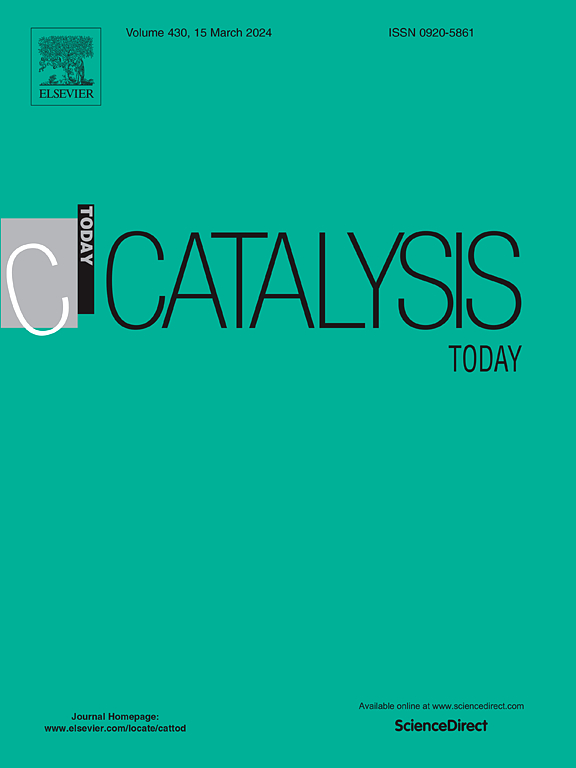Regulating surface reactive oxygen species to promote ·CH3 generation on Er2O3 catalysts
IF 5.2
2区 化学
Q1 CHEMISTRY, APPLIED
引用次数: 0
Abstract
Methyl radicals (·CH3) are crucial intermediates in the oxidative coupling of methane (OCM) reaction mechanism, involving both heterogeneous and homogeneous processes. We quantitatively determined the concentrations of desorbed ·CH3 from meticulously synthesized Er2O3 catalysts using in situ synchrotron-based vacuum ultraviolet photoionization mass spectrometry (SVUV-PIMS). Our findings corroborate that the generation capacity of ·CH3 serves as a robust metric for describing the catalytic performance of OCM. This investigation revealed that the modulation of reactive oxygen species (O- and O2-) on the surface of various Er2O3 catalysts significantly influences the generation capability of ·CH3 radicals. Notably, the ratio of these reactive oxygen species demonstrates a positive correlation with both the concentration of ·CH3 radicals and the C2 yield. Consequently, the generation potential of ·CH3 serves as a critical linkage between the reaction performance of OCM and the surface structure of the catalyst, thereby enriching our comprehension of the intrinsic relationship between structure and performance in catalysts based on metal oxide during the OCM reaction.
调控表面活性氧促进Er2O3催化剂生成·CH3
甲基自由基(·CH3)是甲烷氧化偶联(OCM)反应机制中至关重要的中间体,涉及多相和均相过程。我们使用基于原位同步加速器的真空紫外光电离质谱(SVUV-PIMS)定量测定了精心合成的Er2O3催化剂解吸·CH3的浓度。我们的研究结果证实,·CH3的生成能力可以作为描述OCM催化性能的稳健指标。研究表明,不同Er2O3催化剂表面活性氧(O-和O2-)的调节对·CH3自由基的生成能力有显著影响。值得注意的是,这些活性氧的比例与·CH3自由基浓度和C2产率呈正相关。因此,·CH3的生成势是OCM反应性能与催化剂表面结构之间的关键联系,从而丰富了我们对金属氧化物催化剂在OCM反应过程中结构与性能之间内在关系的理解。
本文章由计算机程序翻译,如有差异,请以英文原文为准。
求助全文
约1分钟内获得全文
求助全文
来源期刊

Catalysis Today
化学-工程:化工
CiteScore
11.50
自引率
3.80%
发文量
573
审稿时长
2.9 months
期刊介绍:
Catalysis Today focuses on the rapid publication of original invited papers devoted to currently important topics in catalysis and related subjects. The journal only publishes special issues (Proposing a Catalysis Today Special Issue), each of which is supervised by Guest Editors who recruit individual papers and oversee the peer review process. Catalysis Today offers researchers in the field of catalysis in-depth overviews of topical issues.
Both fundamental and applied aspects of catalysis are covered. Subjects such as catalysis of immobilized organometallic and biocatalytic systems are welcome. Subjects related to catalysis such as experimental techniques, adsorption, process technology, synthesis, in situ characterization, computational, theoretical modeling, imaging and others are included if there is a clear relationship to catalysis.
 求助内容:
求助内容: 应助结果提醒方式:
应助结果提醒方式:


